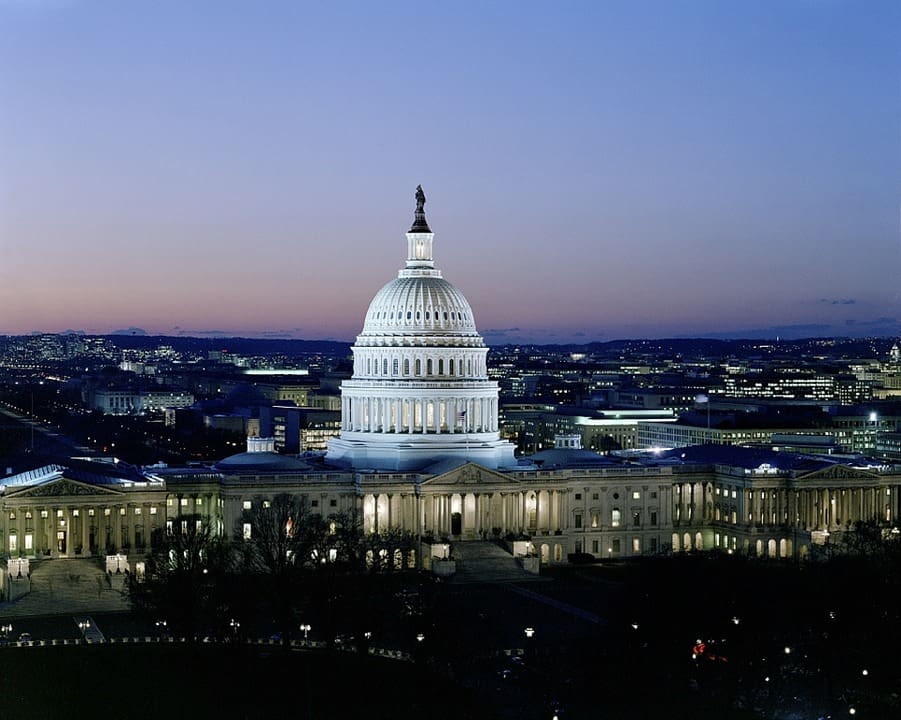
If you’re here on a student visa, you may have an immigration case without even knowing it. And if you’re considering coming to the United States on a student visa, there are things you should know.
There are reasons why fewer people are coming into the US to study than ever before, a trend which has continued for two years in a row.
Immigration policies aren’t the only reason for this decline, but they certainly play a role.
A Policy Almost Designed to Create Cases
Meet PM-602-0163, a policy memorandum issued by the Trump administration which grants U.S. Citizenship and Immigration Services (USCIS) the authority to “deny any application, petition, or request without issuing a Request for Evidence (RFE) or Notice of Intent to Deny (NOID).
The policy covers F-1, J-1, and M-1 visas.
See also: Your Visa Renewal: What Steps Are Required to Continue Working in the U.S.?
This means you can lose your status as a legal immigrant without even knowing it. And you may not catch it until it’s time to apply for a new Visa, or even for citizenship.
Under these latest immigration policies Accruals of Unlawful Presence will begin the day after your status expires. This is a shift from previous policies, which would have begun after a judge decided a violation had occurred.
And you have just 180 days to leave the U.S. after the Accruals begin. If you do not do so because you do not know, you could be denied the right to enter the U.S. again for up to three years.
You can file a reinstatement application, but USCIS will not consider the request to be filed timely if you’ve been out of status for longer than 5 months.
See also: Current Immigration Climate and How to Handle an Encounter with ICE
What to Do If You’re Applying for a New Visa
The overall process of applying for a new student Visa hasn’t changed. However, your plans can now be significantly delayed by a denial you didn’t expect.
In the absence of an RFE or a NOID you may assume you’re just waiting on approval until the day you learn you’ve missed your window, school is already in session, and you can’t come into the states.
And since USCIS can and does deny applications for even very minuscule mistakes, you are better off working with an immigration lawyer from the moment you know you wish to study at an American University. It’s my job, and the job of attorneys like me, to make sure your visa application is done correctly.
See also: 5 Times You Should Hire an NY Immigration Lawyer to Help With Your Visa Application
What to Do If You’re Up for Reinstatement
In addition to making sure you’re working with a qualified immigration attorney, you may wish to carefully monitor the status of your application so you will be aware if you have encountered a problem.
You can do this at the U.S. Department of State Consular Electronic Application Center’s website.
You should commit to checking every day from the moment you make any application or petition to USCIS. The new policy has basically placed the onus on the immigrant to monitor and be aware of their own status at all times, and “I was not informed” is not the kind of defense you wish to be left with should your status expire.
That way if you see a denial you’ll be able to respond immediately by calling and getting legal help. Time is of the essence.
Don’t Give Up
While it may be tempting to contemplate pursuing your education in a country which is a little bit easier to deal with, America still boasts the Top 10 universities in the world, and many of the Top 50.
If studying here is still your dream, it is a worthwhile goal. Contact our offices so we can help you attain it.
Today, President Trump signed a bill that will reopen the government until February 15, 2019. This temporary spending bill allows thousands of government employees to return to work and thousands more to receive a paycheck for the 35 days they woke up, went to work, but didn’t get paid. What the temporary bill approved by the president doesn’t include is funding for a border wall or any indication what these thousands of employees can expect to happen in another three weeks.
The partial government shutdown reached nearly ever function and department of the federal government – immigration included. For each of the 35 days that non-essential government employees were furloughed, there were court employees and immigration officials unable to work. What impact did these 35 days and a stalled government have on immigration cases? Our team at the Law Firm of Kyce Siddiqi looks into the extensive repercussions of a government shutdown on the immigration process.
The Short-Term Effect on Immigration Cases
As the shutdown unfolded, the short-term consequences for immigration cases were readily apparent. In the span of a few weeks, hundreds of thousands of immigration hearings were canceled or delayed. On January 14th, just 24 days into the partial government shutdown CNN reported that 40,000 immigration cases were canceled. Immigration cases across the United States would be canceled for another 11 days following the release of the statistics from CNN and other news organizations.
The reason so many immigration cases were cancelled in just over a month is because court officials ranging from stenographers and court reporters to immigration judges were furloughed during the shutdown. In fact, only immigration courts that handle detention cases remained open during the shutdown. Other immigration courts only heard a small number of cases that were originally on the docket.
Cancelled hearings, particularly this extensive
number of cancelled or delayed cases, are an administrative nightmare for
immigration courts. Finding the time to schedule these cases is a formidable
challenge for the already overcrowded immigration courts. Yet, the greater
burden is on the foreign nationals and immigrants that are waiting for their
hearing date. These individuals need to fight deportation orders, request
asylum, and prove compliance with their visa. Now, the decisions that could
dictate futures are further postponed.
Long-Term
Consequences on Immigration Cases
The full impact of the government shutdown on
immigration cases is still unknown, but there are certain to be long-term and
extensive ramifications. The only cases heard during the 35 days of the
government shutdown were deportation cases where the defendant was detained and
held by immigration officials. All other cases now join the giant backlog of
cases facing immigration courts.
Prior to the government shutdown, immigration
courts faced a high volume of cases. Each day new matters were entered onto the
docket, more cases in a day than immigration courts could handle. According
to reports, there were 800,000 immigration cases backlogged before the
government shutdown. Now, there are plenty more on that list.
It could take immigration courts months or even years to recover from the consequences of the government shutdown and individuals should expect delays and long waits for the foreseeable future. In particular, there is an increase in the number of asylum claims waiting for review and approval by an immigration judge. The individuals behind asylum cases are given little option but to wait, while certainty and safety are pushed further off in time.
Handling
the Impact of the Shutdown on Immigration Cases
What can you do if your immigration case is among the thousands canceled in December of January? To start, you need the right legal counsel for your case. Whether you never hired an immigration lawyer or want a new perspective on your case, the time to hire a New York immigration lawyer is now.
More than ever, individuals with pending immigration cases, visa applications, and asylum claims need to work with an experienced lawyer, who can ensure a case is handled as efficiently and swiftly as possible. At the Law Offices of Kyce Siddiqi, we are doing everything possible to get immigration cases back on the docket and heard by a judge. We can take your case. To meet with a lawyer from our office, simply call (646) 930-4488.

There were a number of immigration issues discussed and debated in 2018. In the past twelve months, the federal government and President implemented a zero-tolerance policy for immigrants illegally crossing the border, including families, made substantial changes to visa schemes, discussed the end to birthright immigration, continued to prevent individuals from Iran, Syria, and elsewhere from immigrating to the United States, and increased arrests for undocumented immigration. However, one the biggest immigration issues of the year has resurfaced just as 2018 draws to a close.
The federal government is in the sixth day of a
partial government shutdown, and the central issues are immigration policy and
border security. At the core of the disagreement is the President’s request for
$5.7 billion to construct a steel wall on the border with Mexico. He is
refusing to sign any bill that doesn’t include specify that amount for the
wall. Yet, needing 60 votes in the Senate to pass a spending bill means the
President will need Democratic support to receive the money, which is unlikely.
What
Is the Border Wall Important to the Administration?
In mid-December, the President made a
surprising statement during a televised conversation with Nancy Pelosi, Vice
President Pence, and Chuck Schumer. President Trump said that he would take the
blame for a government shutdown at the end of December. Historically, no
president or other lawmaker would want the responsibility and blame for a
government shutdown on their shoulders. However, President Trump was taking the
burden for one specific reason, immigration.
His most influential and memorable promise on the campaign trail back in 2016 wasn’t a general overhaul of immigration policy or vague changes to immigration law. Rather, candidate Trump promised something very specific – a wall that spanned the entire United States and Mexico border. Building a border wall became a central talking point at his rallies and a stronghold for his base. Yet, over two years later and construction hasn’t begun.
Funding the government at the end of 2018 could
be one of President Trump’s last opportunities to allocate the necessary funds
to a border wall. If the gamble to engage in a stalemate with Democratic
leaders doesn’t work, it could mean the wall is never built. The significance
of that promise for his core supporters could influence approval ratings in
2019 and even a run for re-election in 2020.
What
Does the Wall Mean for Immigration Policy?
Discussion around the border wall has dominated
immigration conversations for over two years. Other issues have held center
stage for a week or month, for example, the President’s decision to end DACA or
the policy to separate families at the border. However, the future of
immigration policy in the United States has time and again returned to the
question of a border wall.
For those that support the construction of a physical wall, there is a hope it will curb illegal immigration and prevent the movement of drugs and firearms across the border. The President has used inconsistent and unsupported numbers to exemplify these problems. There is evidence that the majority of illegal immigration occurs when visitors overstay their visas and no indication from the DEA or other federal agency that a physical wall will slow the transportation of illegal substances.
Supporters also hope that a physical wall will
prevent violent or dangerous individuals from entering the United States
illegally.
For those opposed to a wall on the border of Mexico, there is a wide range of arguments and issues. Many people point out that a physical wall wouldn’t address some of the biggest problems with illegal immigration. There are additional financial arguments for not building the wall, including better allocation of the funds and stronger options to increase border security.
Other people are bothered by symbolism of a
border wall. A physical wall stands for more than a barrier, it separates
cultures and nationalities in an obvious and insurmountable way. A wall quite
literally divides, and that is highly problematic for many Americans.
This symbolism of a steel border wall also influences other aspects of immigration policy. It indicates that the United States is closed off and uninterested in allowing immigration, when the country was built on the opposite value. The wall is also frequently used as a jumping off point for other arguments against rigid and unfeeling approaches to immigration.
How
Will This Immigration Stalemate Be Resolved?
It is uncertain how the partial government
shutdown will end. There are strong opinions on both sides of the aisle and a
sense that this determination could set the tone for other immigration debates.
As well, the Democrats will take control of the House of Representatives in
just a few days, making it even more difficult for President Trump to win the
Congressional votes he needs.
While the issue of a border wall is crucial to
the President, he faces an uphill battle on the issue going into January.
Public opinion is generally opposed or indifferent to the idea and it is only
his central base that is clamoring for construction to begin. Based on polls
and statistics, there is no reason for the Democrats to cave on this
immigration issue and approve wall spending.
To learn more about issues of undocumented immigration, asylum, and immigration to the United States, contact our team at the Law Office of Kyce Siddiqi. You can reach our immigration law firm at (646) 930-4488.
A week ago a federal judge in California issued a ruling on one of two lawsuits against the Trump Administration’s recent restrictions on asylum. In his opinion, the judge stated, “Whatever the scope of the President’s authority, he may not rewrite the immigration laws to impose a condition that Congress has expressly forbidden.” As an asylum lawyer in New York, our team followed the initial presidential proclamation from President Trump and legal arguments very closely. The legality or illegality of these restrictions had a huge impact on our current and future clients.
Just as an asylum lawyer in our office is prepared to answer your questions on the asylum process and how to help a family member or friend in need of asylum, we strive to provide factual and correct information on the changes to immigration policy, including implications for asylum seekers. Keep reading for an overview of the Administration’s asylum restrictions and why a district court judge ruled the restrictions were illegal.
New Restrictions on the Asylum Process
As a caravan of Central and American migrants made their way closer to the border of the United States and Mexico, the Trump Administration took several steps to limit the possibility for these individuals to cross into the United States.
First, the Administration ordered several thousand active duty members of the military to the border. These servicemen and women were instructed to assist with safety and security at the border, in the event that the number of migrants overwhelmed usual border security. Of course, on a daily basis the U.S. Customs and Border Patrol is responsible for security as thousands of people pass through the checkpoint inSouthern California.
Second, the Administration issued a presidential proclamation on November 8th. The new rule included in the presidential proclamation was purposefully and specifically intended to stymie most or all of the Central Americans traveling in the caravan. As an asylum lawyer, this executive action was immediately worrisome.
The executive measure required all asylum seekers to present themselves at official points of entry to the United States. The restriction would stay in place for 90 days. If a migrant fails to claim asylum at the time of entry and at an official border crossing, the right to do so is forfeited. This is in strong contrast to the current status of immigration law in the United States. The Trump Administration argued the new measures were necessary for safety and efficiency.
The Department of Homeland Security and Department of Justice subsequently stated that the new measures would allow foreign asylum seekers to enter the United States in an orderly and controlled manner. Is this a fair argument?
Two Legal Counters to the Asylum Changes
The response to the Trump Administration’s new measure, the American Civil Liberties Union (ACLU), Center for Constitutional Rights and the Southern Poverty Law Center took immediate legal action. The ACLU’s constitutional and human right’s lawyers made two arguments against the executive branch’s asylum “ban.”
The ACLU argued that the President bypassed a mandatory 30-day notice on any changes to governmental regulations. This procedural requirement is necessary because U.S. immigration law, according to Congress, specifically allows migrants to claim asylum while in the UnitedStates. Therefore, the ACLU’s related argument is that the President overstepped his executive power in revising the requirements of asylum.
As an asylum lawyer in New York, our law firm has represented individuals making asylum applications at all times and points in their journey to the United States. We’ve helped migrants understand the asylum requirements while still in their home country and provided the resources for an asylum claim at a U.S. point of entry. Our team also handles asylum actions for individuals already in the United States.
We understand that the Administration’s actions would make it far more difficult for families to enter the United States and severely delay the timeframe for making an asylum claim. Migrants are already spending days and weeks waiting on the Mexican side of the border, as only a certain number of asylum seekers and visa applicants can be processed each day. For Central Americans desperate to reach a safer place to live, the new restrictions on asylum wouldn’t just slow the process, but rather, make it an impossible option.
District Court Ruling on the Changes to Asylum
A district court judge in California ruled in favor of the ACLU and its partners on November 20th. The legal basis for the judge’s decision is based on four points.
Two of the judge’s arguments were directly related to the separation of powers and authority o of the executive branch. The district judge, Jon Tigar, stated that Congress had made a clear statement in the process and procedure of asylum. Congress determined that the availability of asylum extended to individuals already in the United States.
It wasn’t within the power of the executive branch to enforce immigration law in a way that is incongruent with the legislature’s actions. When Congress has made an explicit statement, the executive branch can’t merely change the law. The purpose of the executive branch is to carry out the law, not create it.
The third determination by the court was the executive branch was enforcing the asylum law in a manner conflicting with the law itself. Currently, asylum law in the United States allows an individual to claim asylum after entering the United States, even if the entry was illegal. The judge stated that it was impossible to allow an asylum seeker to follow the law, and claim asylum after entry, and enforce the presidential proclamation.
Finally, Judge Tigar addressed the
Administration’s argument that to defy a presidential proclamation, and not
claim asylum at the border, was a more serious offense than crossing illegally
into the United States. If followed to conclusion, this argument would mean
violation of the presidential proclamation overruled the current asylum process
and immigration law, and should be enforced as a matter of priority. The judge
determined this wasn’t true under past precedent.
Where Does That Leave Asylum Seekers?
The determination by the district court is only the first of several legal battles for the Administration and the ACLU. The determination by Judge Tigar only impacts the presidential proclamation until December 19th, when the court must rule on whether to permanently stop the asylum measures or not. There is also the possibility of an appeal by the Department of Justice to overturn the ruling entirely. These options and potential for more changes to asylum law in the United States create a lot of uncertainty for an asylum lawyer and clients.
It is crucial to bring questions on asylum, changing immigration policy, and any new measures to an asylum lawyer. It is with legal assistance from a firm, such as the Law Office of Kyce Siddiqi that you have a better opportunity for a hearing and fair ruling on your asylum matter. To learn more contact us at 646-930-4488

It is very likely that you missed the news regarding popular employment visa to the United States, the H-1B visa. Amidst an onslaught of other U.S. immigration news and political crossfire, the current administration’s confirmation that it will end working rights for spouses of H-1B visa holders was only followed by immigration lawyers and those impacted by the potential change. We watched closely here at the Law Firm of Kyce Siddiqi, and we certainly weren’t alone with our concerns for immigrants in New York.
The number of people impacted by the proposed change to the H1-B visa number in the thousands. In any other news environment, this could’ve dominated conversations on immigration. Each of these immigrants, all spouses of H-1B visa holders and holders of their own H-4, which grants the right to work in the United States, is at risk of losing their opportunity for employment, income, and financial future. Families that depend on a second income are rightfully worried.
Yet, it is November and nothing has been finalized by the administration. The fate and future opportunities of individuals with the H-4 visa remains in the balance, and it’s time we discussed what the proposed change means for an employment visa in the U.S. and what actions these immigrants can take right now to retain their right to work.
What Is the H-4 Employment Visa?
Foreign nationals with the opportunity and desire to work in the United States are most likely to obtain the temporary right to employment under the H-1B visa scheme. The H-1B is a non-immigration and limited duration employment visa that allows a foreigner to work for a U.S. business. The number of H-1B visas granted each year is limited to 65,000 for individuals holding a bachelor degree and 20,000 for people with their masters or other post-graduate degrees.
Many individuals granted an employment visa in the United States don’t move alone. Foreign workers employed by U.S. Companies want to bring spouses and children. The visa granted to spouses of H-1B recipients is called the H-4 visa. For a very long time, spouses of H-1B visa holders were given the right to live and remain in the United States, but not the right to work.
Giving Spouses of Employment Visa Holders the Ability to Work
In 2015 the United States Citizenship and Immigration Services passed the Employment Authorization for Certain H-4 Dependent Spouses (EAD Rule). This crucial legislation was implemented by the Obama Administration to make it far easier for H-4 visa holders to obtain employment. Not only did this change in work status and the employment visa scheme represent a positive change for H-4 visa holders, but it allowed a wider range of people to consider the H-1B visa, knowing their spouse could also have an income in the United States.
However, the ability to work in the United States isn’t granted to every H-4 visa holder. As the name indicates, it is a select and certain few that are even eligible to apply under the EAD Rule. The H-4 visa holder must either have an approved immigration petition to receive a Green Card or permanent residency in the United States or have non-immigration status in the United States extending more than six years. While many of H-4 visa holders applied for their new “employment visa” or right to work, the number of qualified spouses wasn’t nearly as robust.
Proposed Change to Employment Visa
Uncertainty over changes to the H-4 visa and other aspects of the employment visa process or rights have circulated since President Trump’s election. As early as February 2017, the Trump Administration took action in an ongoing lawsuit against the EAD Rule that indicated its intention to end the employment status of these visa holders. In June, the administration’s commitment to this course of action was reaffirmed.
More recently, discussions around the definition of employment and specialty occupations for an employment visa were raised and circulated by a limited number of newspapers and press. The Trump Administration subsequently confirmed that changes to the H-1B visa were expected in January 2019. These changes are almost certain to negatively impact H-4 visa holders, foreign corporations operating in the United States and employing foreign nationals, and other employment visa holders.
What to Do Now About Your Employment Visa Now?
While the Administration has only indicated and hinted at the proposed changes to employment visas in January 2019, we do know changes are coming. This increases uncertainty for many individuals currently working and residing in the United States. Regardless of your situation, now is the time to contact an immigration lawyer. You can reach our employment visa team at the Law Firm of Kyce Siddiqi by calling (888) 915-7333.















